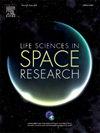利用下体负压提高骨科关节置换术的效果——来自NASA骨骼健康研究的见解
IF 2.8
3区 生物学
Q2 ASTRONOMY & ASTROPHYSICS
引用次数: 0
摘要
暴露在微重力下会导致骨质快速流失和肌肉萎缩,对长时间的太空飞行构成严重挑战。为此,NASA开发了下体负压(LBNP)等应对措施,模拟宇航员下肢的重力负荷。LBNP通常与运动相结合,已被证明在卧床休息类似物期间有效减轻肌肉骨骼退化。这篇观点论文认为,LBNP在微重力下保持骨量和肌肉功能的成功可以转化为改善地球上矫形关节置换术后的恢复。我们在微重力诱导的肌肉骨骼失用和全关节置换术后的术后阶段之间得出了生理上的相似之处,在此期间,负重减少导致植入物周围的骨密度损失(假体周围骨质减少)和肌肉无力。我们建议应用LBNP作为治疗辅助,例如在手术后不久的日常会话中,可以增强肢体灌注,促进骨重塑和种植体骨整合,并加速功能康复。我们回顾了NASA支持LBNP成骨和抗萎缩作用的证据,概述了手术背景下的潜在机制(包括改善循环、机械负荷和减少水肿),并提出了临床应用的愿景。在承认技术和后勤挑战的同时,我们采取了一种有争议的立场,即利用这种源自太空飞行的创新可以改变骨科术后护理。现在有必要进行临床研究,以验证LBNP在关节置换术患者中的应用,将航空航天医学和地面医疗保健联系起来,以改善结果。本文章由计算机程序翻译,如有差异,请以英文原文为准。
Leveraging lower body negative pressure for enhanced outcomes in orthopedic arthroplasty—Insights from NASA’s bone health research
Exposure to microgravity causes rapid bone loss and muscle atrophy, posing serious challenges for long-duration spaceflight. In response, NASA developed countermeasures such as Lower Body Negative Pressure (LBNP) to simulate gravitational loading on astronauts’ lower extremities. LBNP, often combined with exercise, has proven effective in mitigating musculoskeletal degradation during bed rest analogs. This opinion paper argues that LBNP’s success in preserving bone mass and muscle function in microgravity can be translated to improve recovery after orthopedic arthroplasty on Earth. We draw physiological parallels between microgravity-induced musculoskeletal disuse and the postoperative period following total joint replacement, during which reduced weight-bearing leads to bone density loss around the implant (periprosthetic osteopenia) and muscle weakness. We propose that applying LBNP as a therapeutic adjunct, for example, in daily sessions soon after surgery – could enhance limb perfusion, promote bone remodeling and implant osseointegration, and accelerate functional rehabilitation. We review NASA’s evidence supporting LBNP’s osteogenic and anti-atrophy effects, outline potential mechanisms in the surgical context (including improved circulation, mechanical loading, and edema reduction), and present a vision for clinical implementation. While acknowledging technical and logistical challenges, we take a polemical stance that leveraging this spaceflight-derived innovation could transform postoperative care in orthopedics. Clinical studies are now warranted to validate LBNP in arthroplasty patients, bridging aerospace medicine and terrestrial healthcare for improved outcomes.
求助全文
通过发布文献求助,成功后即可免费获取论文全文。
去求助
来源期刊

Life Sciences in Space Research
Agricultural and Biological Sciences-Agricultural and Biological Sciences (miscellaneous)
CiteScore
5.30
自引率
8.00%
发文量
69
期刊介绍:
Life Sciences in Space Research publishes high quality original research and review articles in areas previously covered by the Life Sciences section of COSPAR''s other society journal Advances in Space Research.
Life Sciences in Space Research features an editorial team of top scientists in the space radiation field and guarantees a fast turnaround time from submission to editorial decision.
 求助内容:
求助内容: 应助结果提醒方式:
应助结果提醒方式:


